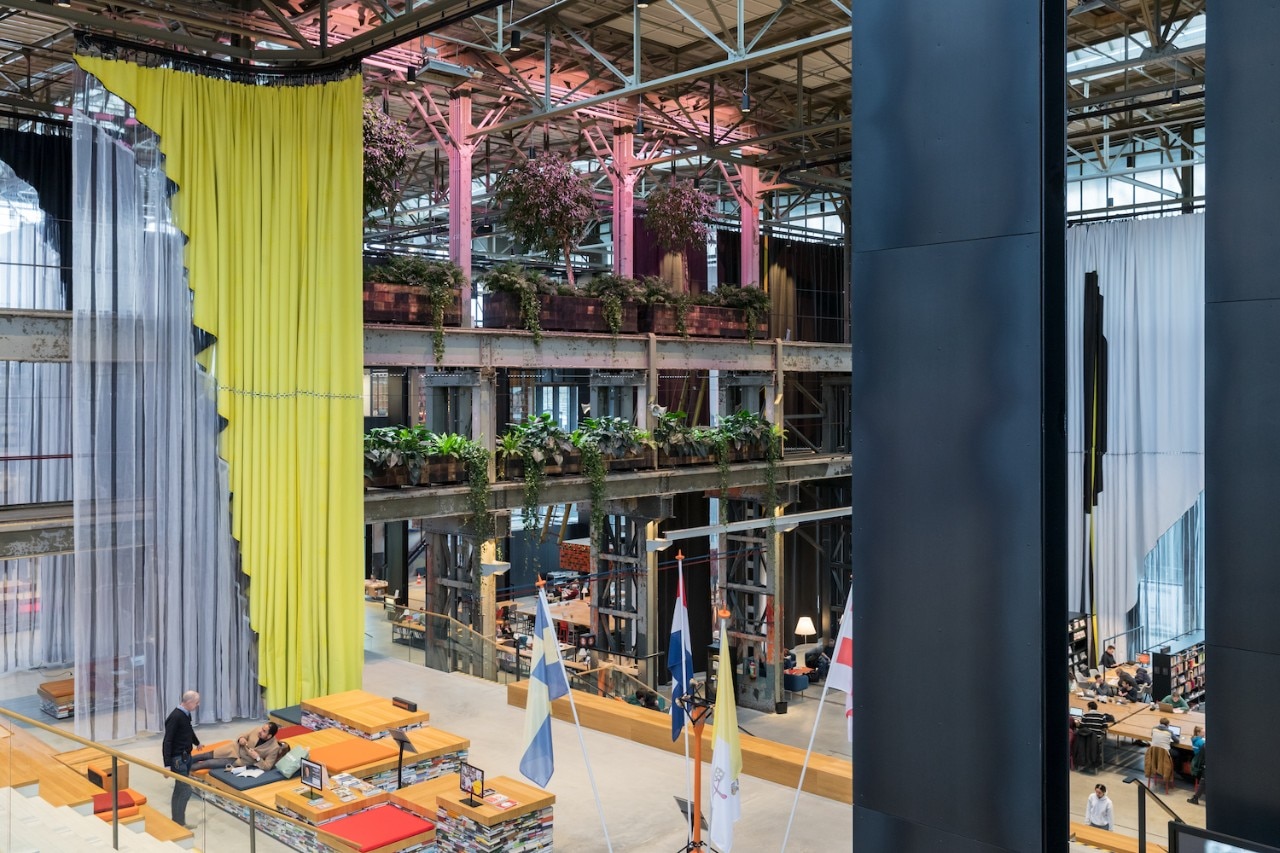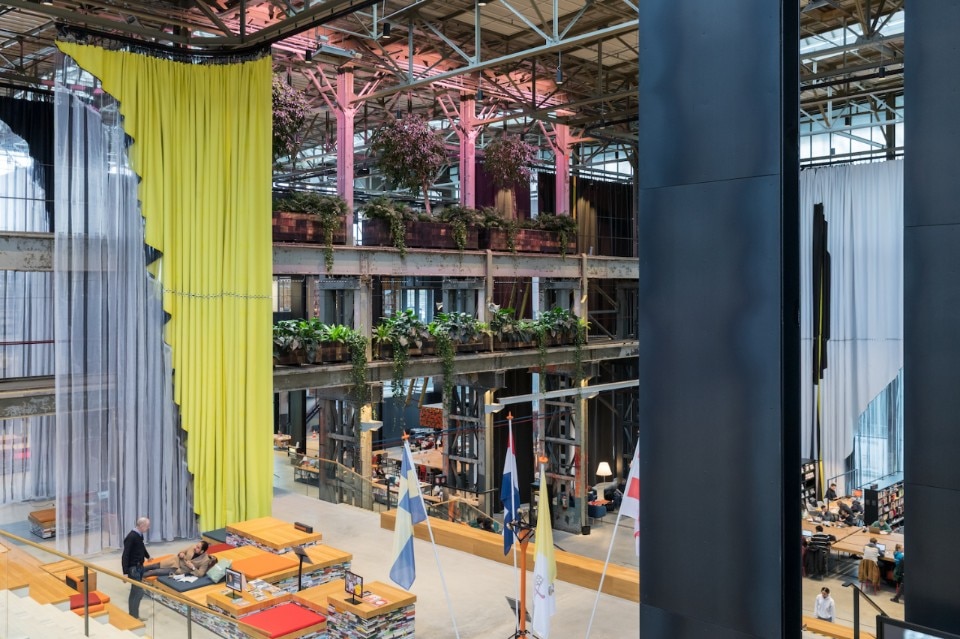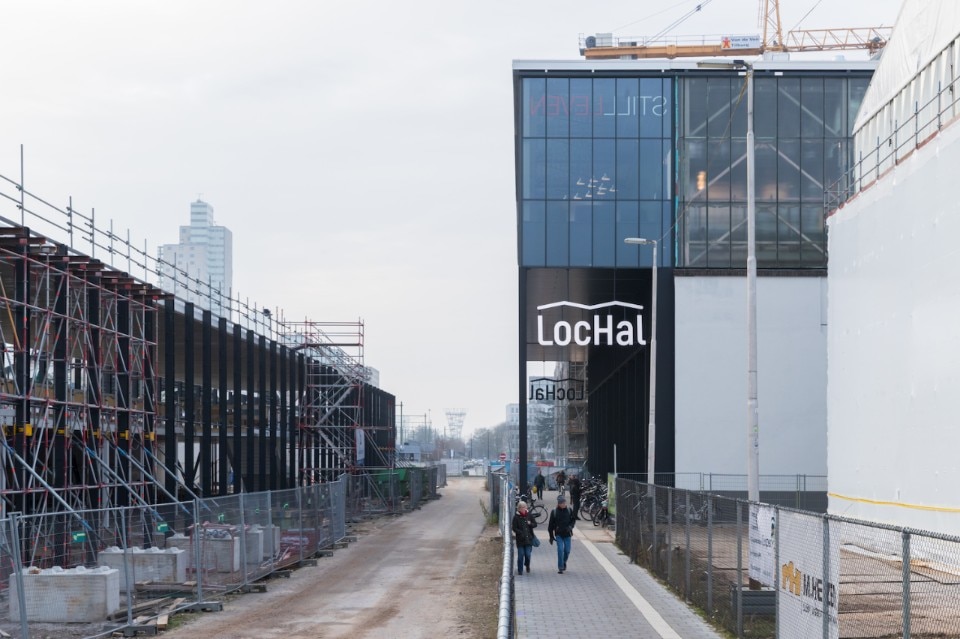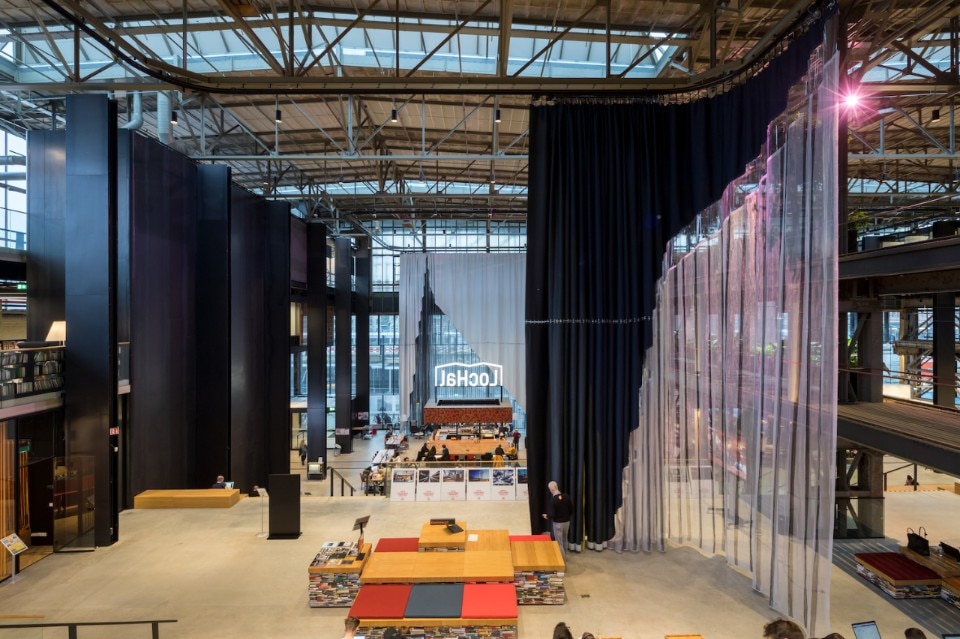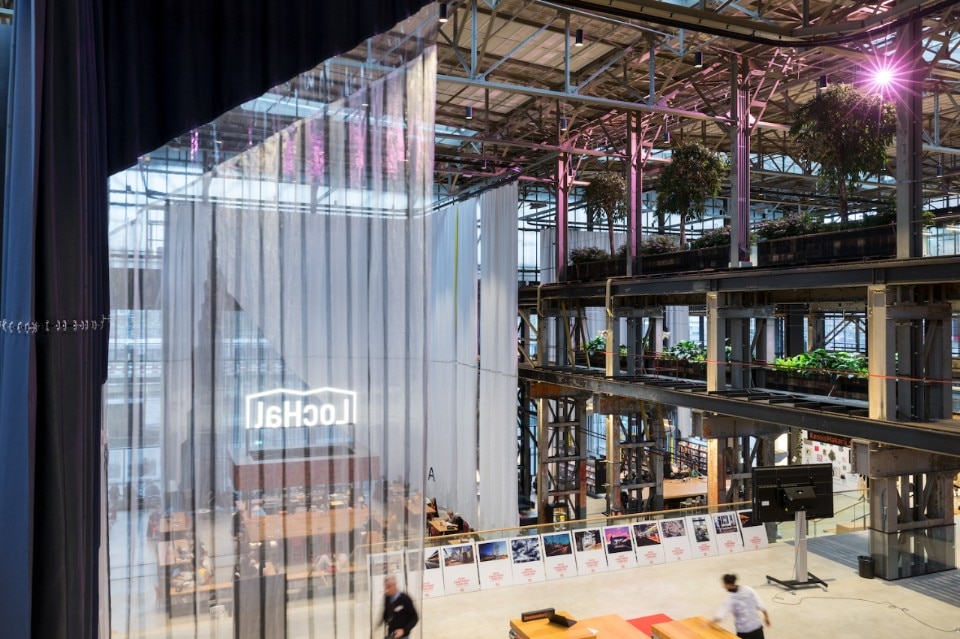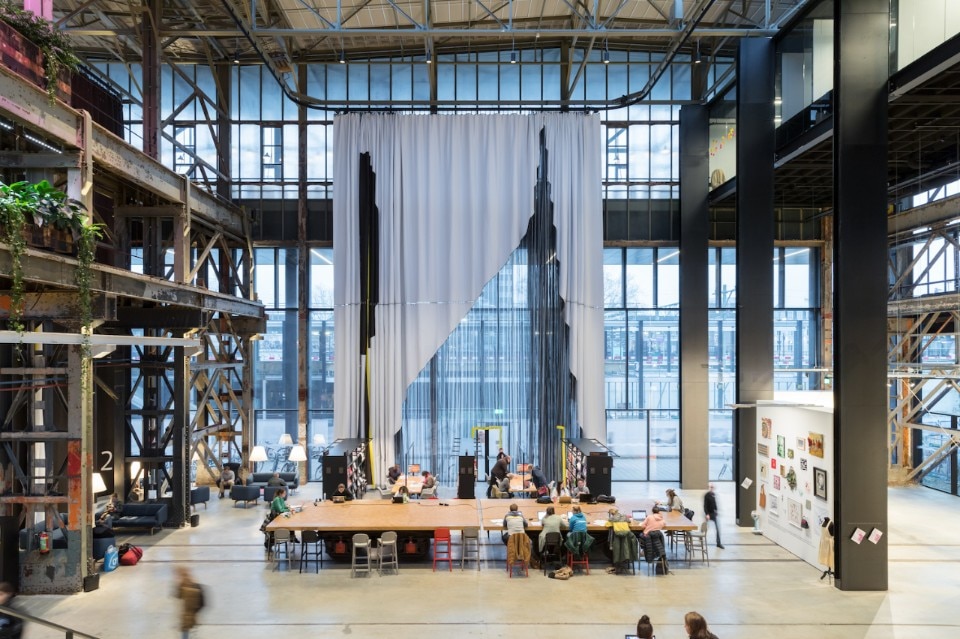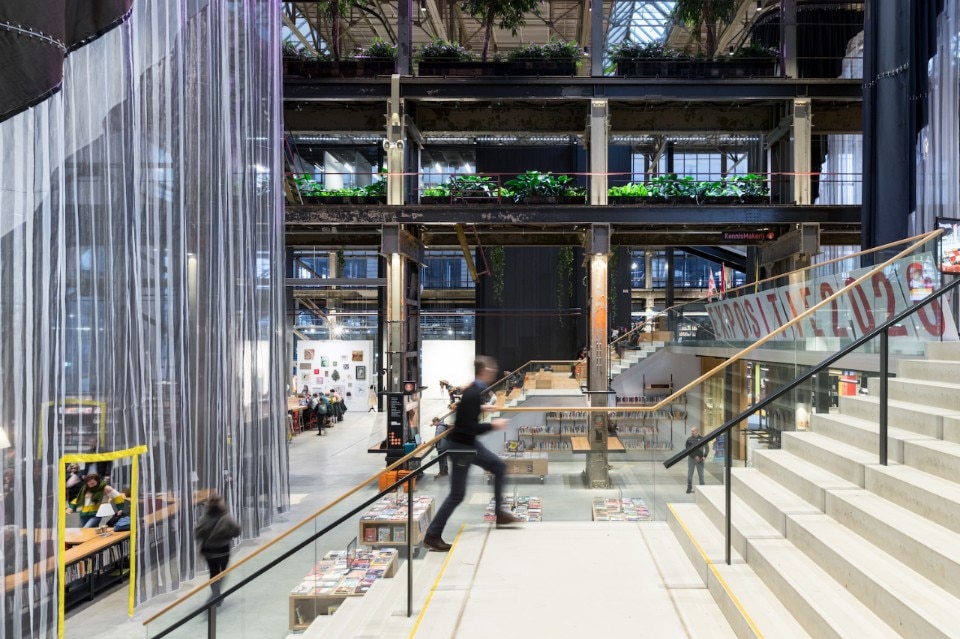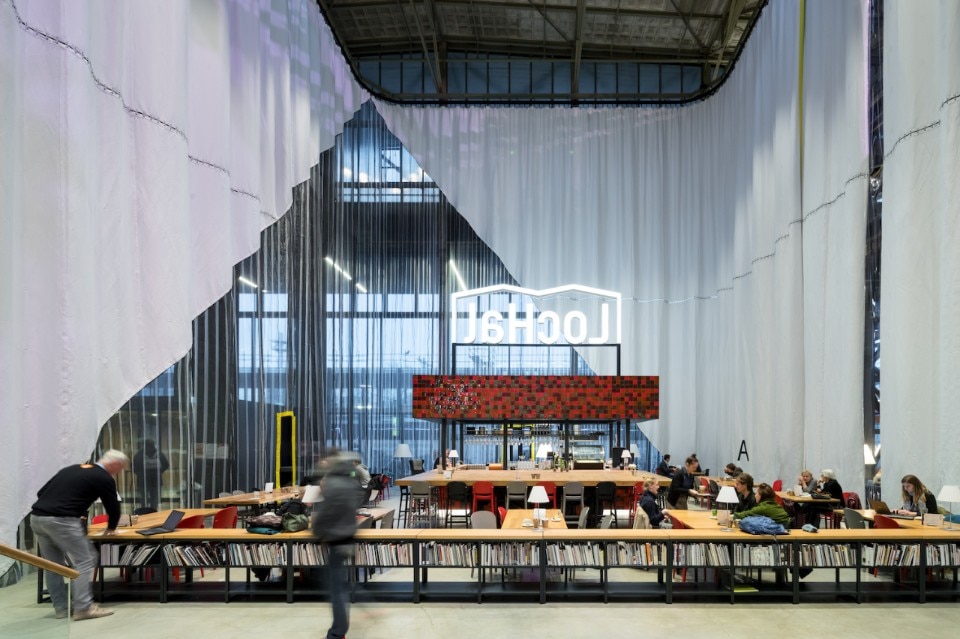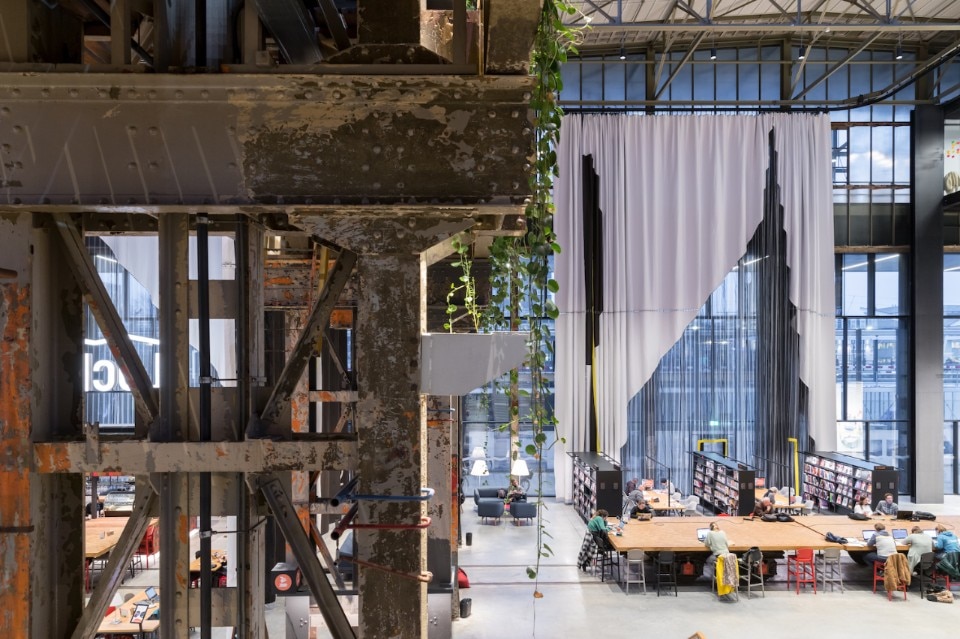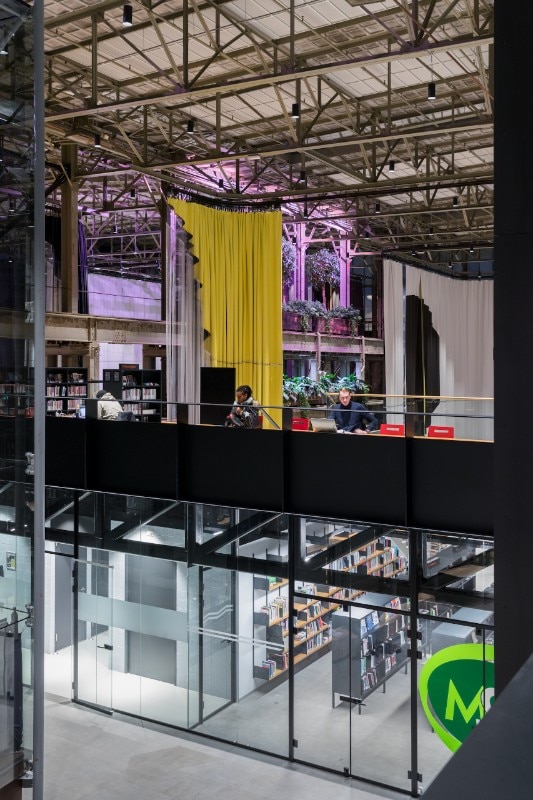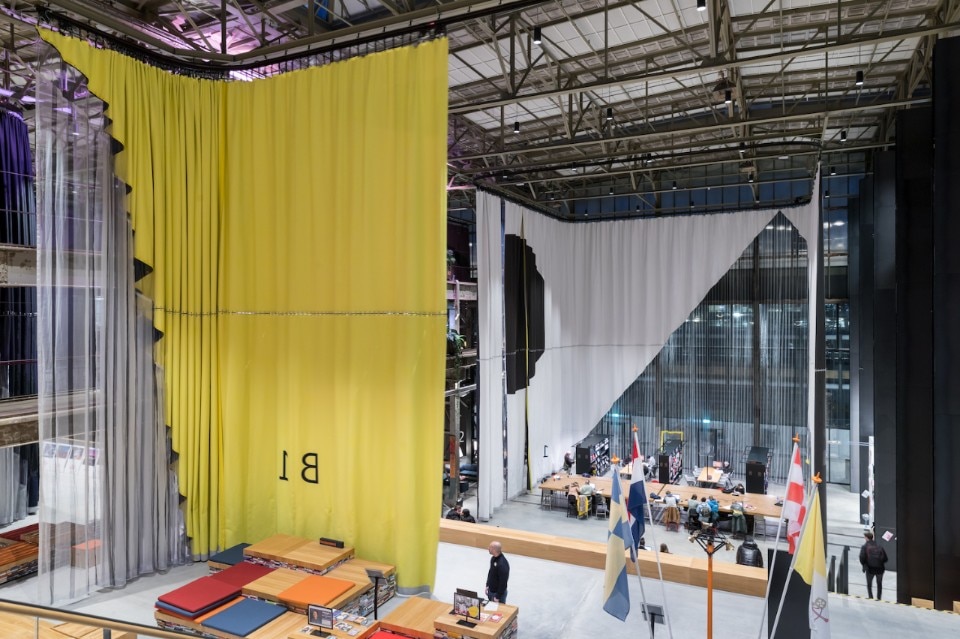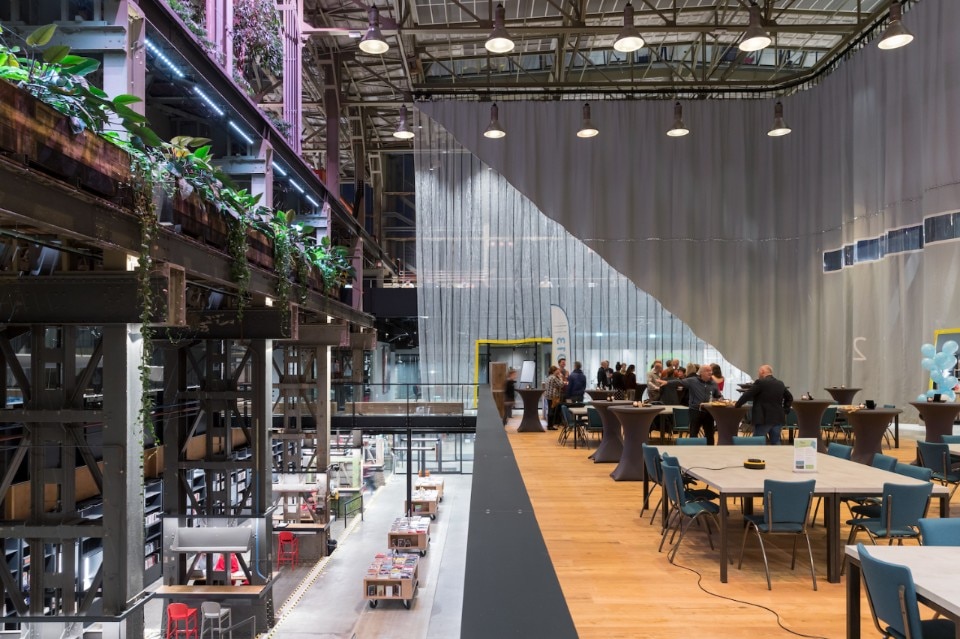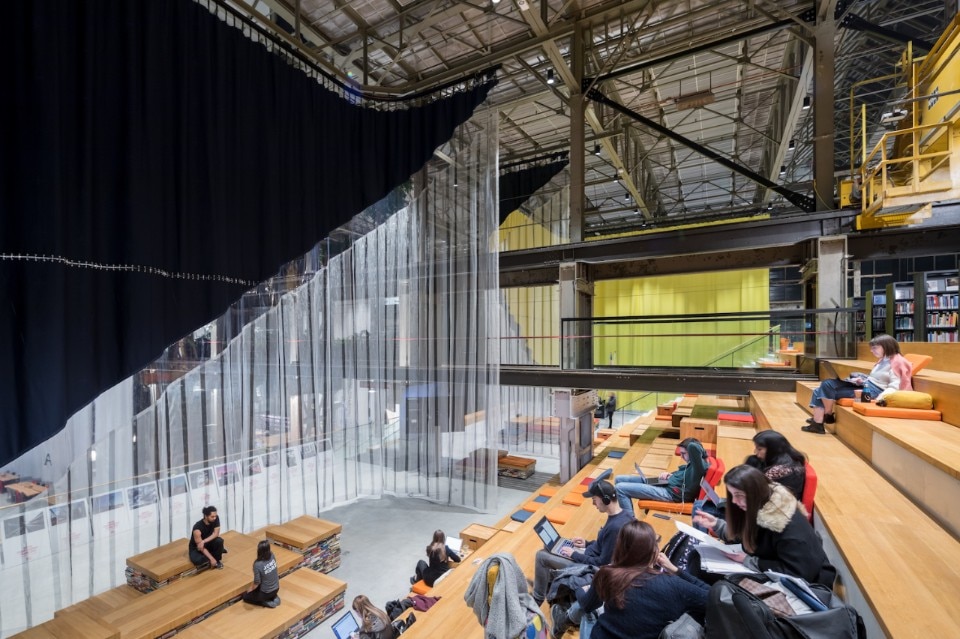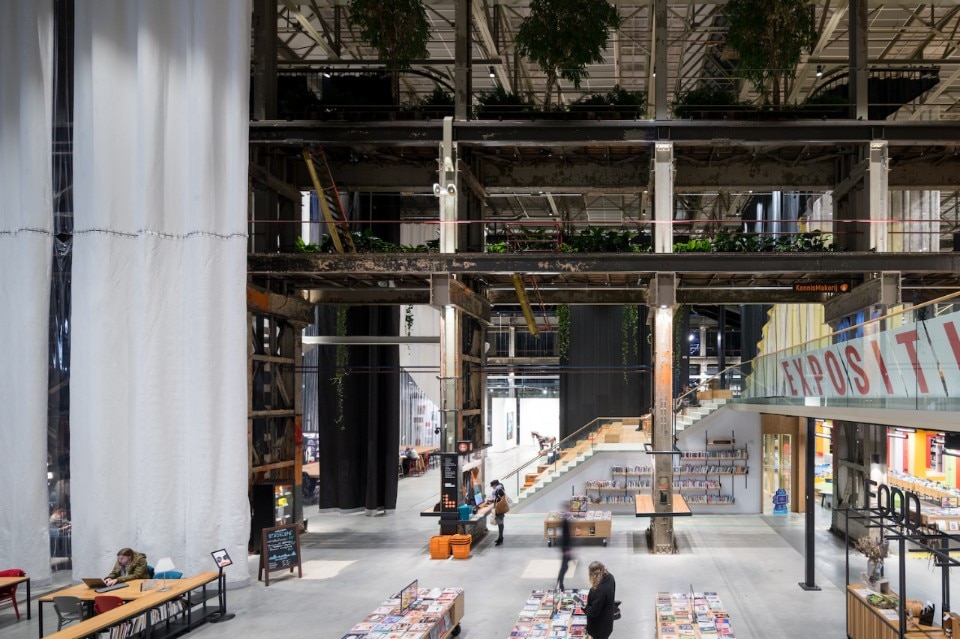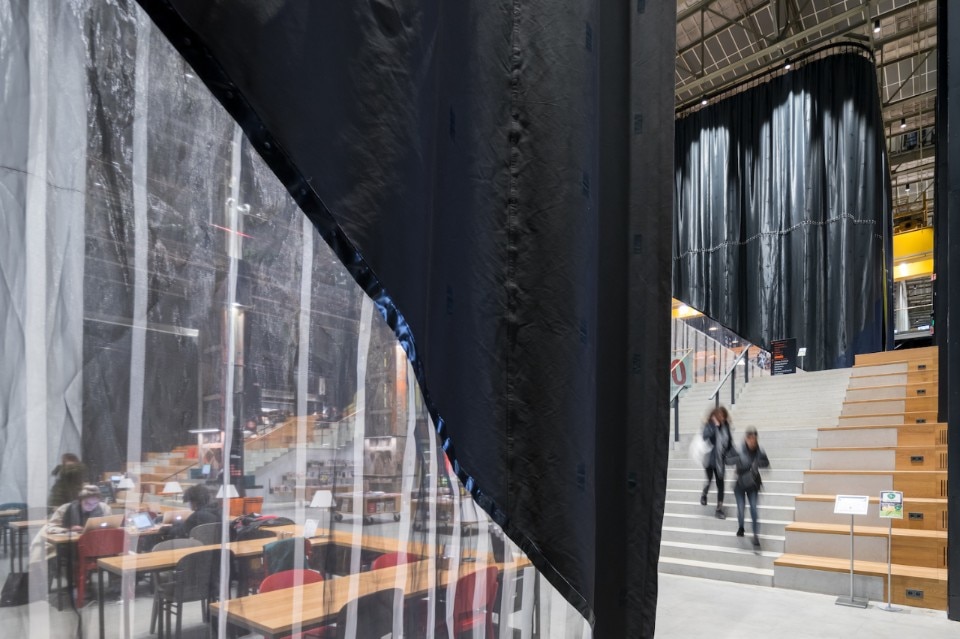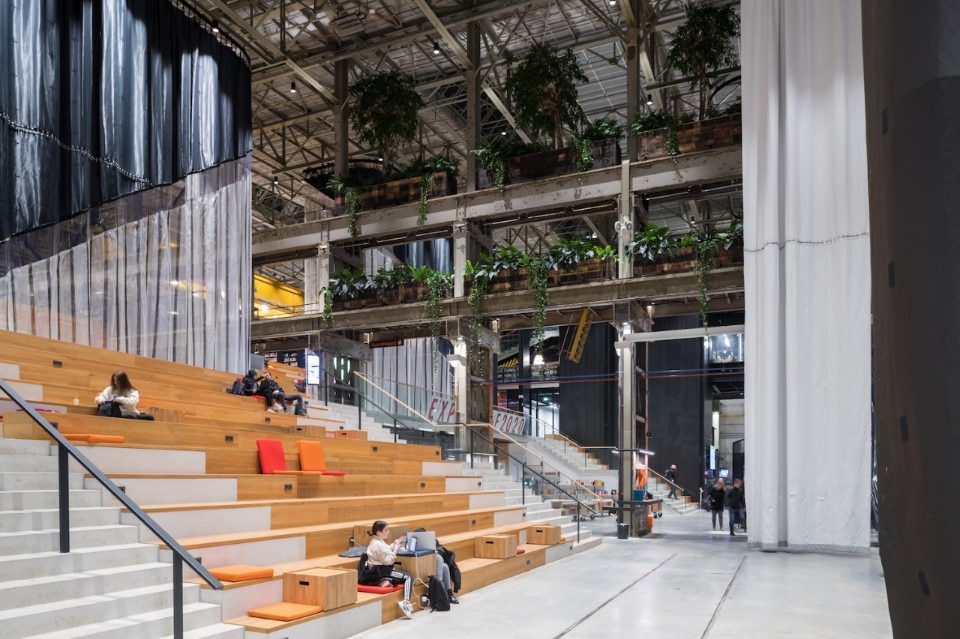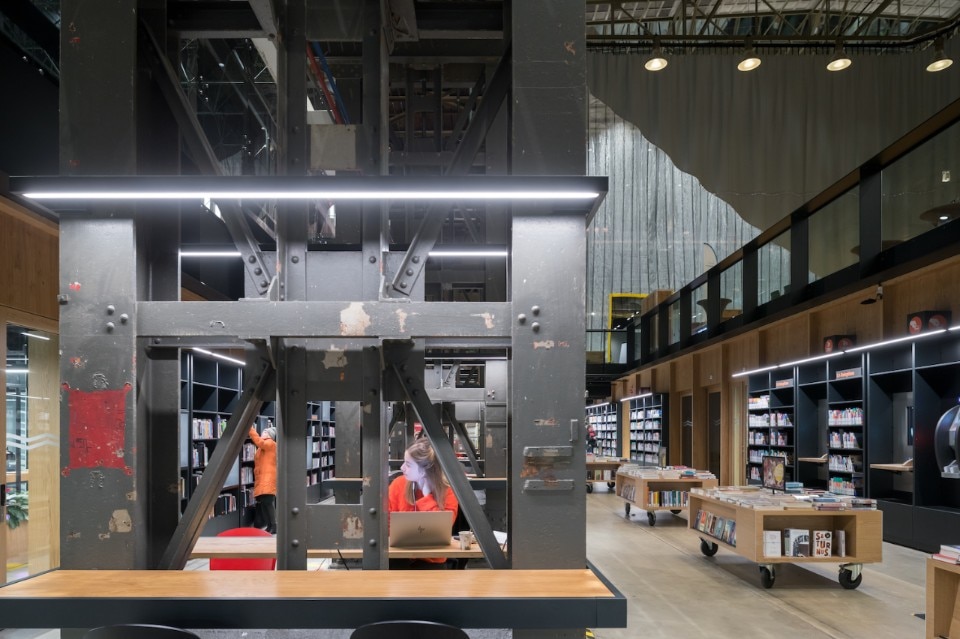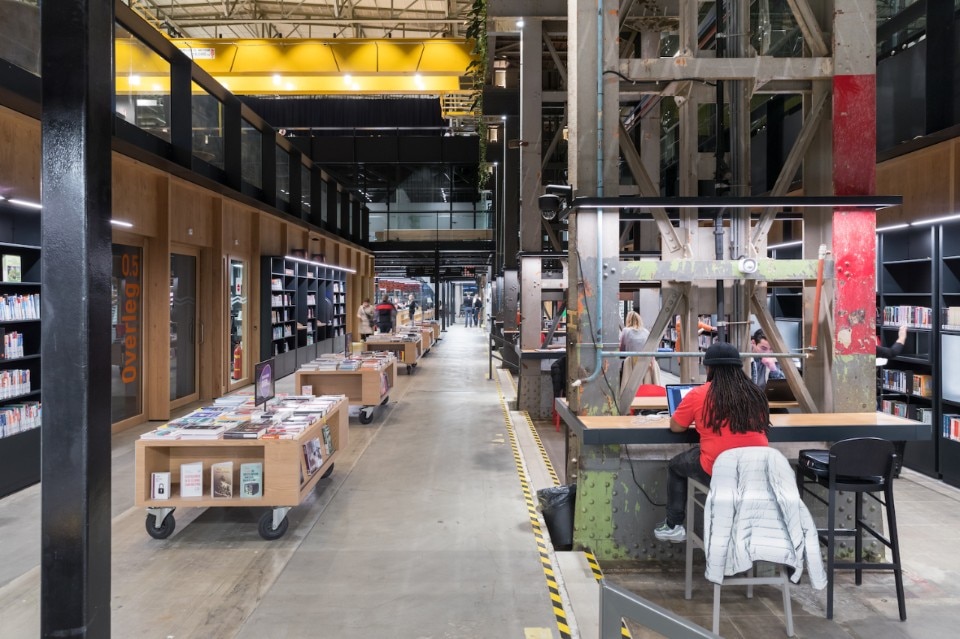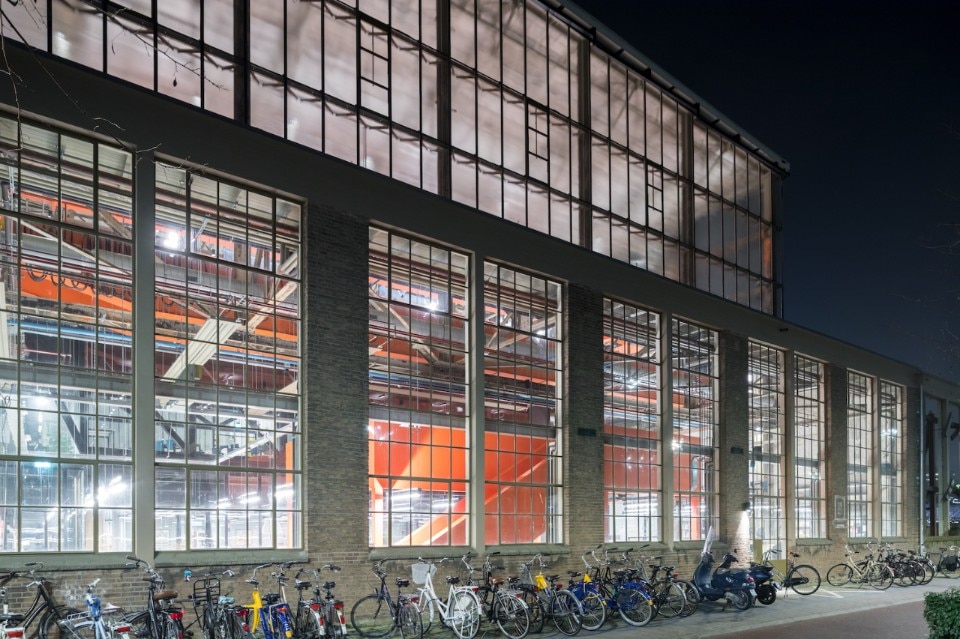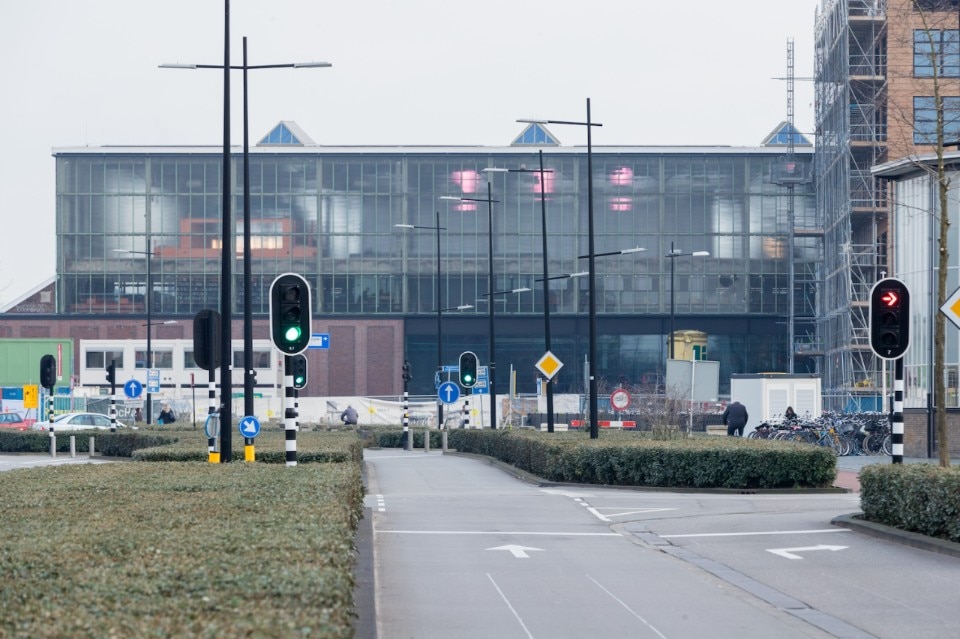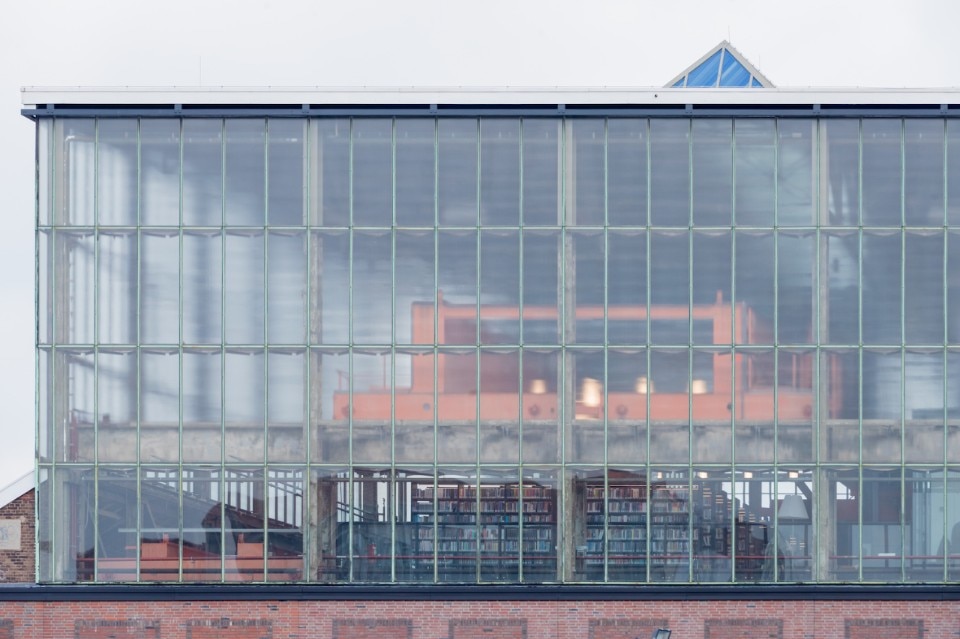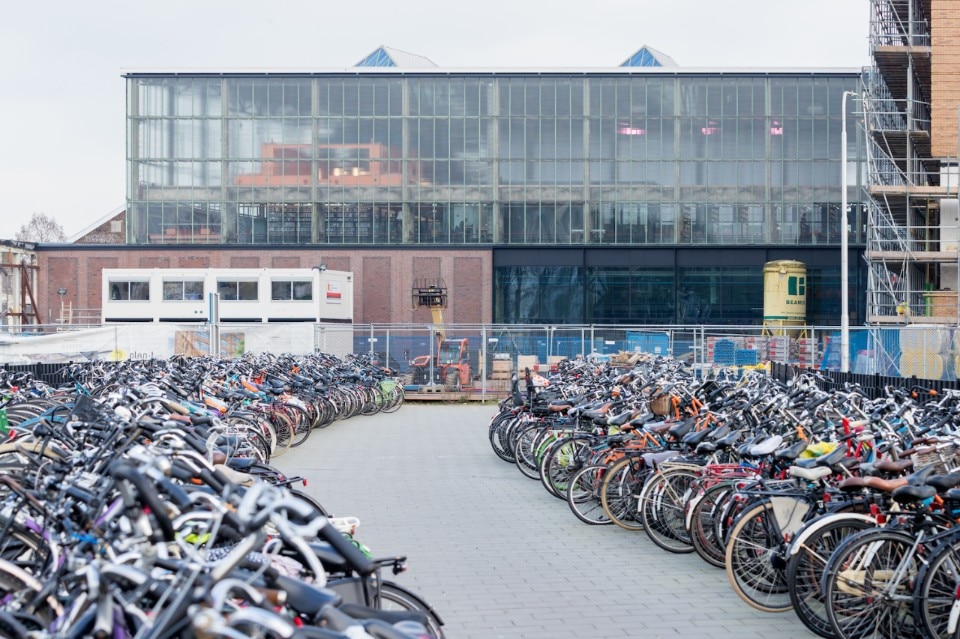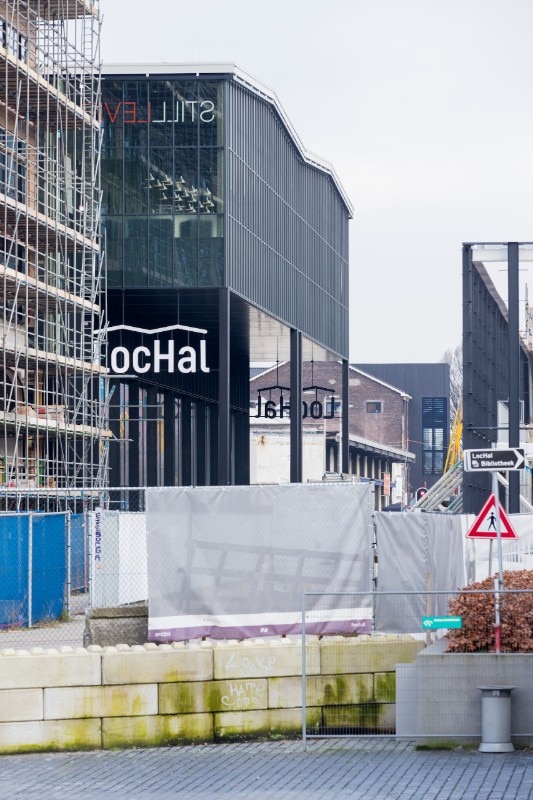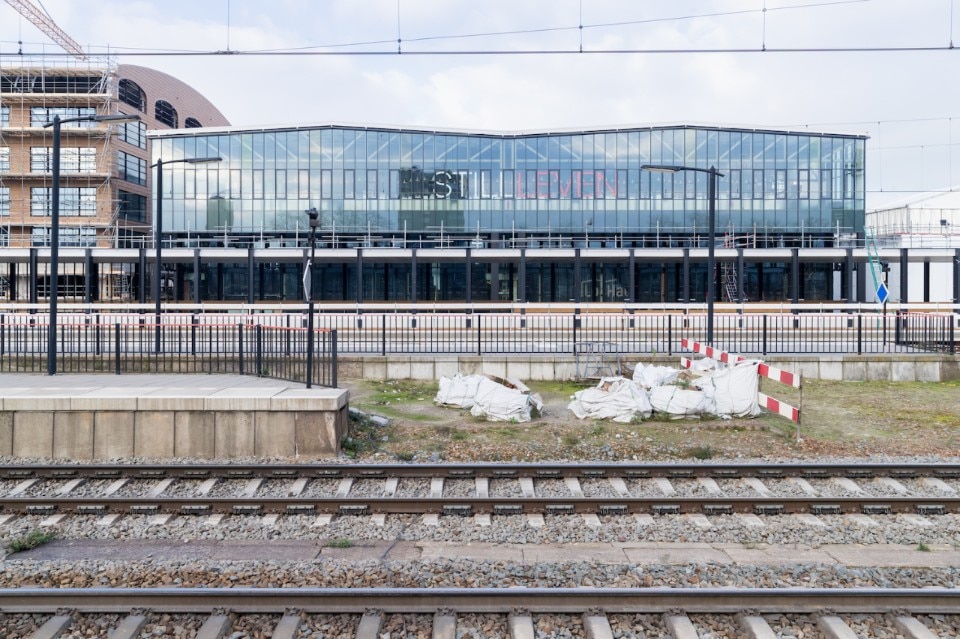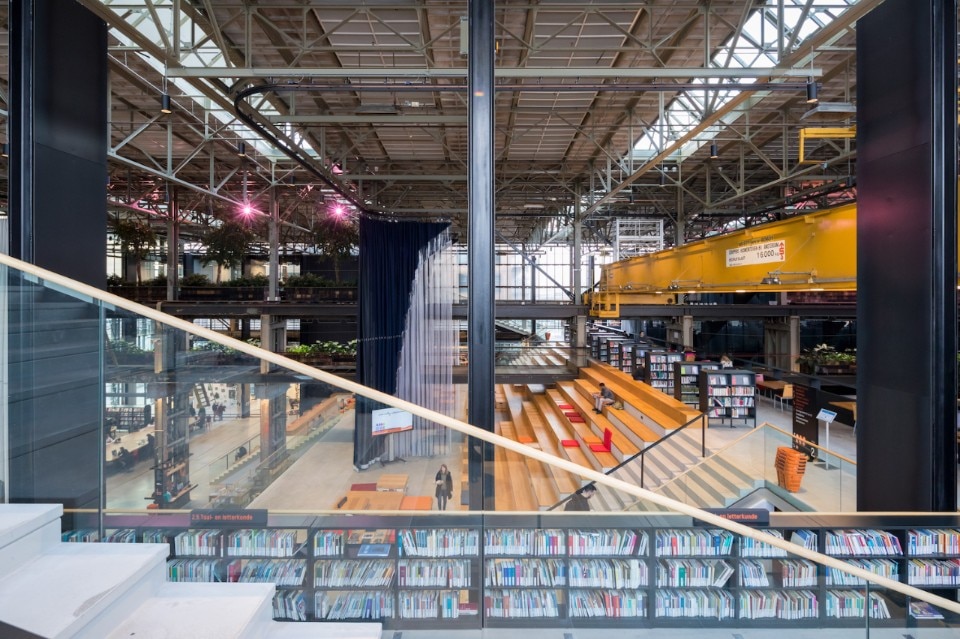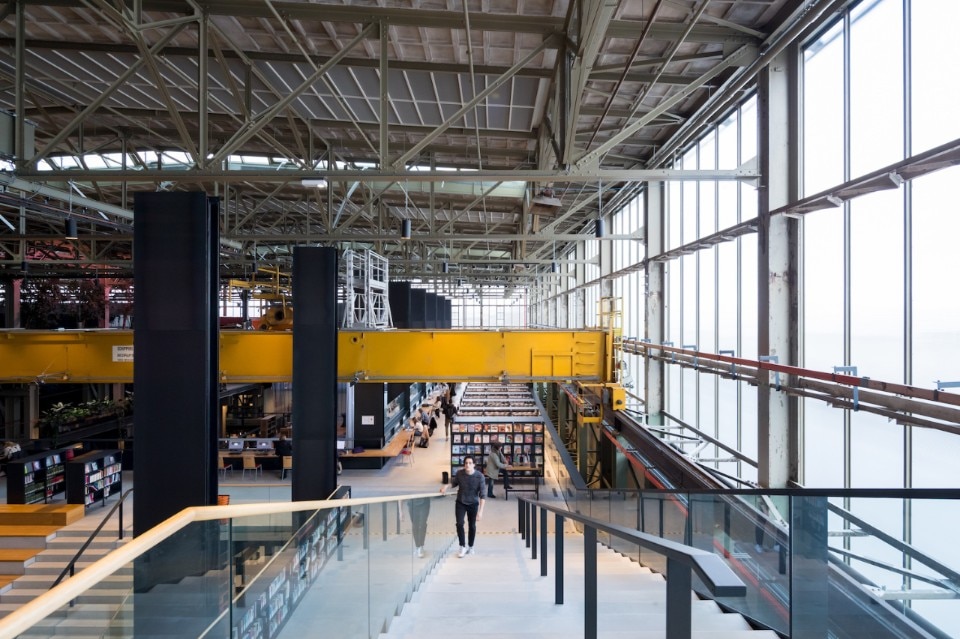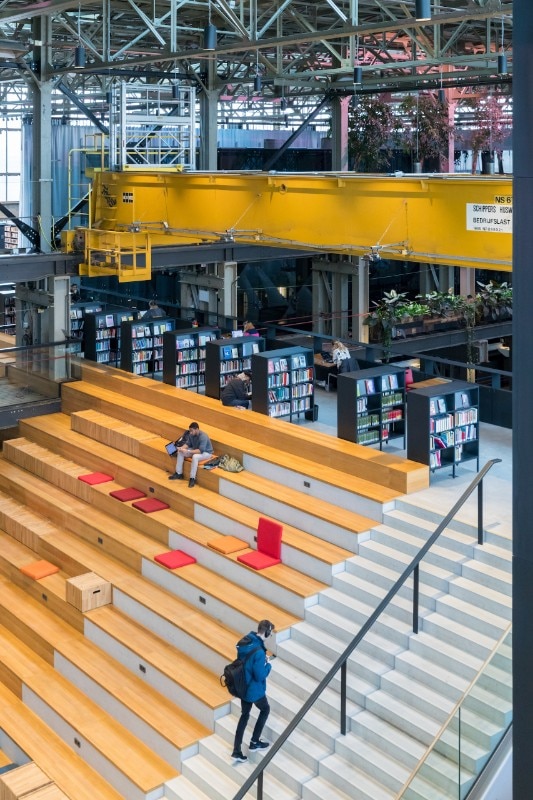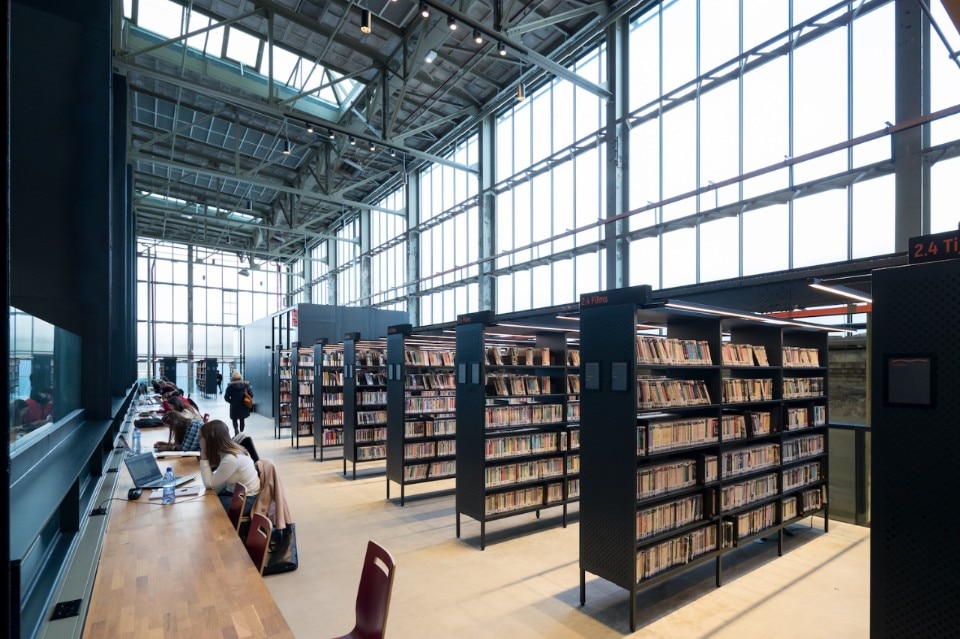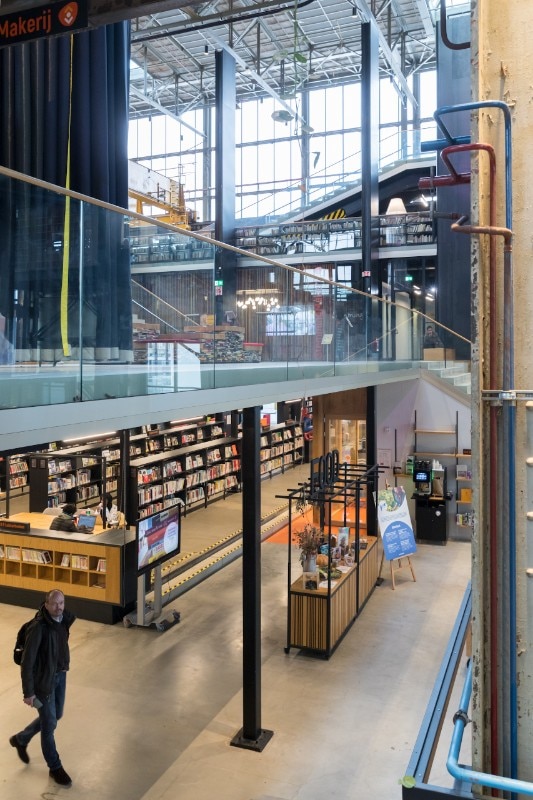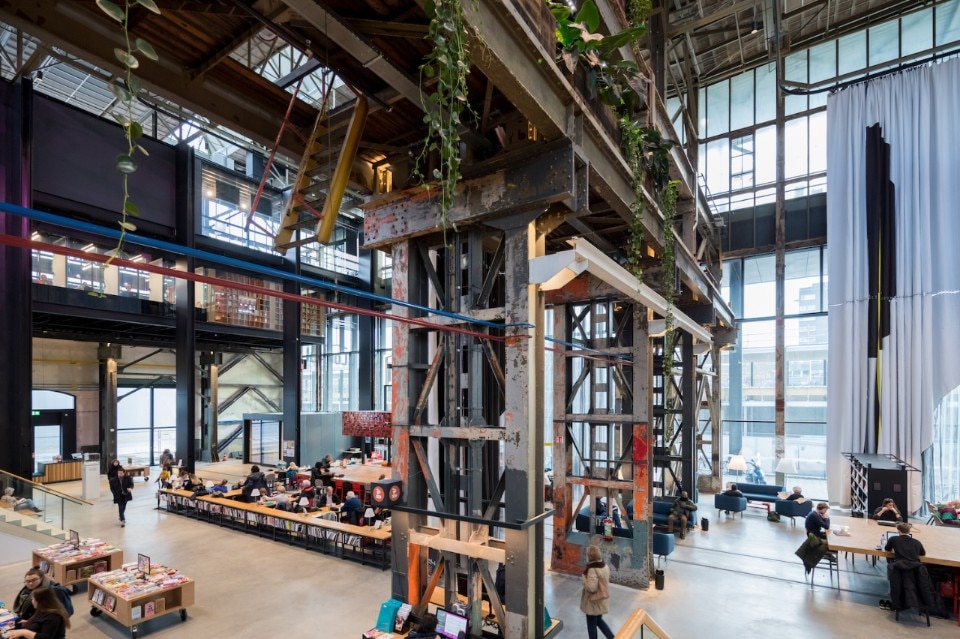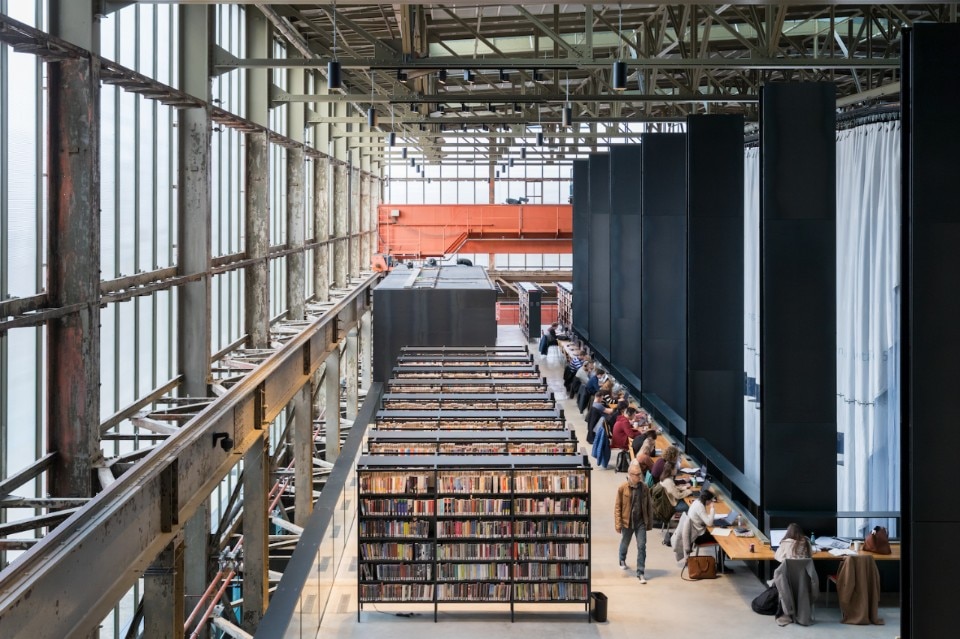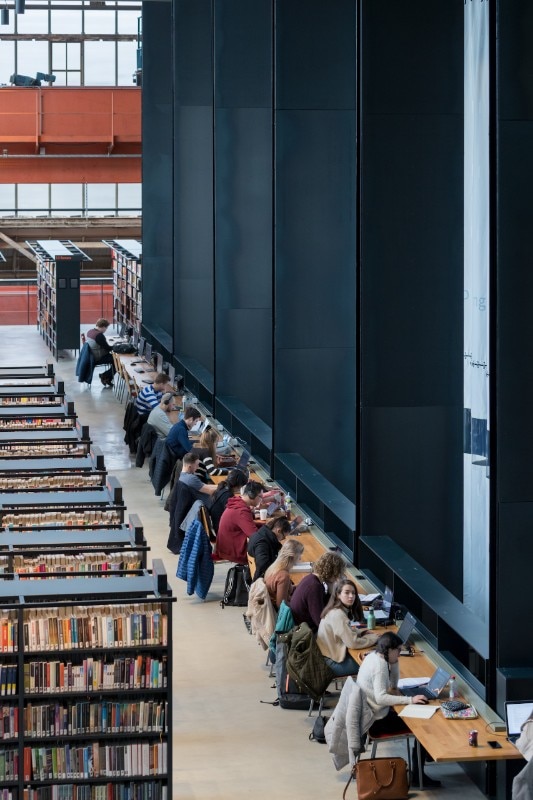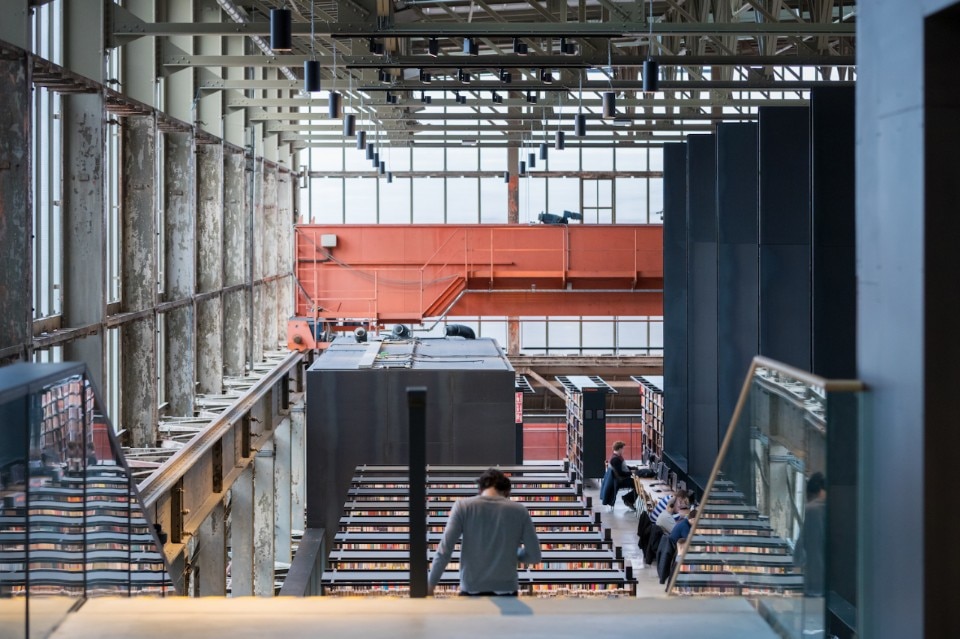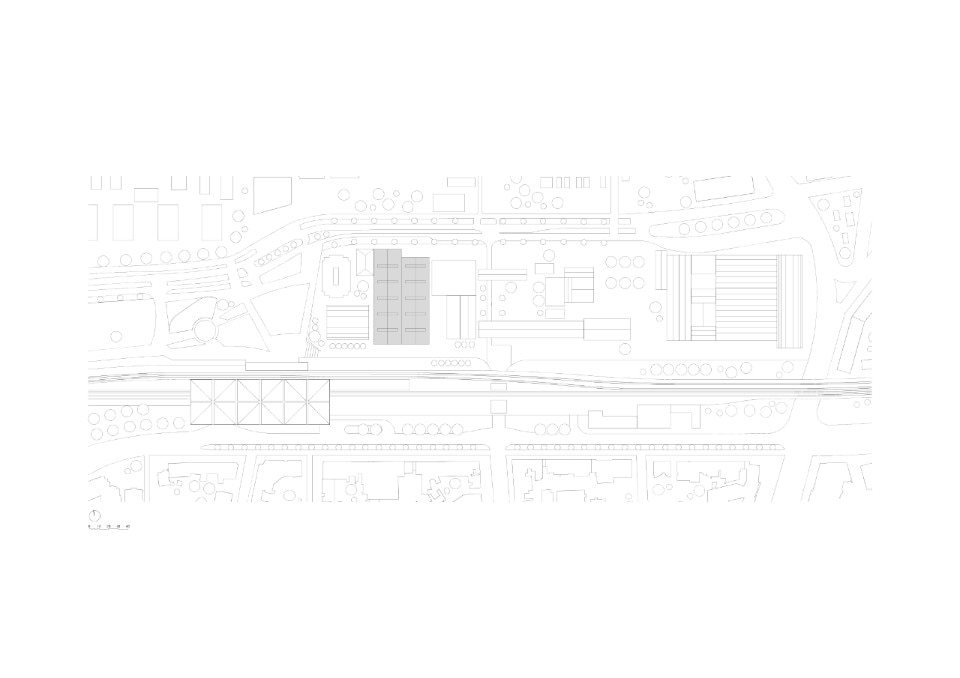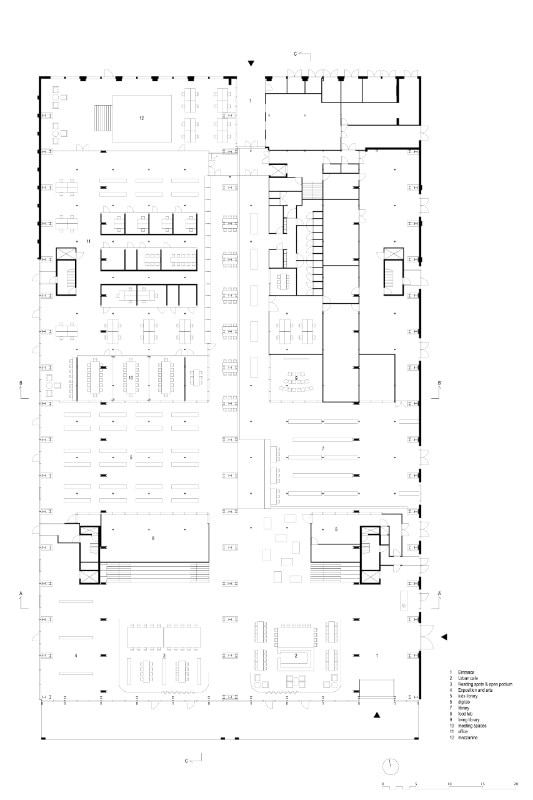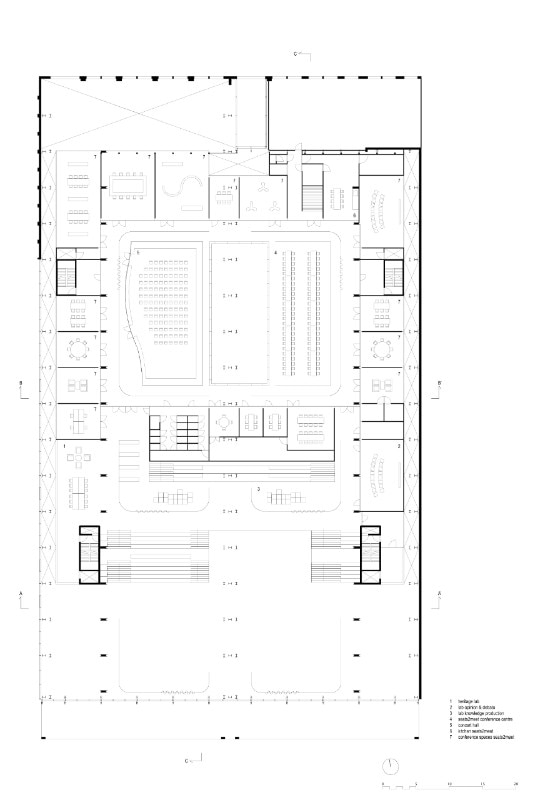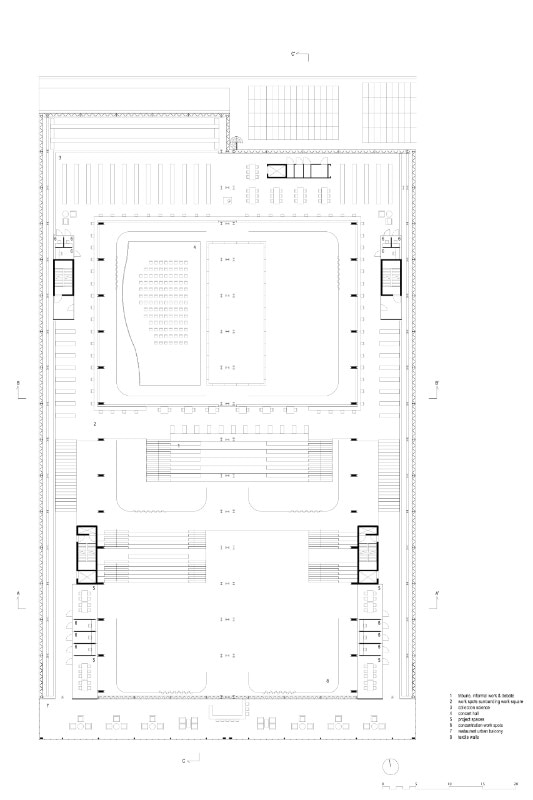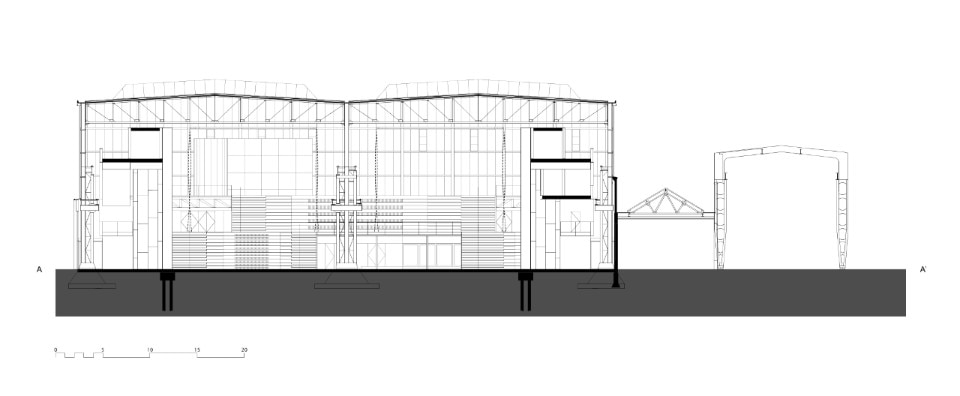This article was originally published on Domus 1044, March 2020.
Over the last 40 years, Tilburg, a city in the south of the Netherlands, has been moving on from its historical textile industry. However, it has done so while recognising the past and the origins of its good fortune, developing a related thematic programme to benefit its population.
To trace modern design in the Netherlands, one has to grasp the duality of the country’s geographical position as being either below or above sea level, and the religious stance of being catholic or protestant. In an apparent contradiction, the architectural heritage of the frugal protestant north is both flamboyant and glamorous compared to the lowlying catholic south with its more functional, sober and even archetypical character. This can be witnessed in the presence of several buildings of the Bossche School, of which the first building of Tilburg University (formerly the Faculty of Economics) is one of the most stringent examples (Jan van der Laan and Jos Bedaux, 1957- 1962).
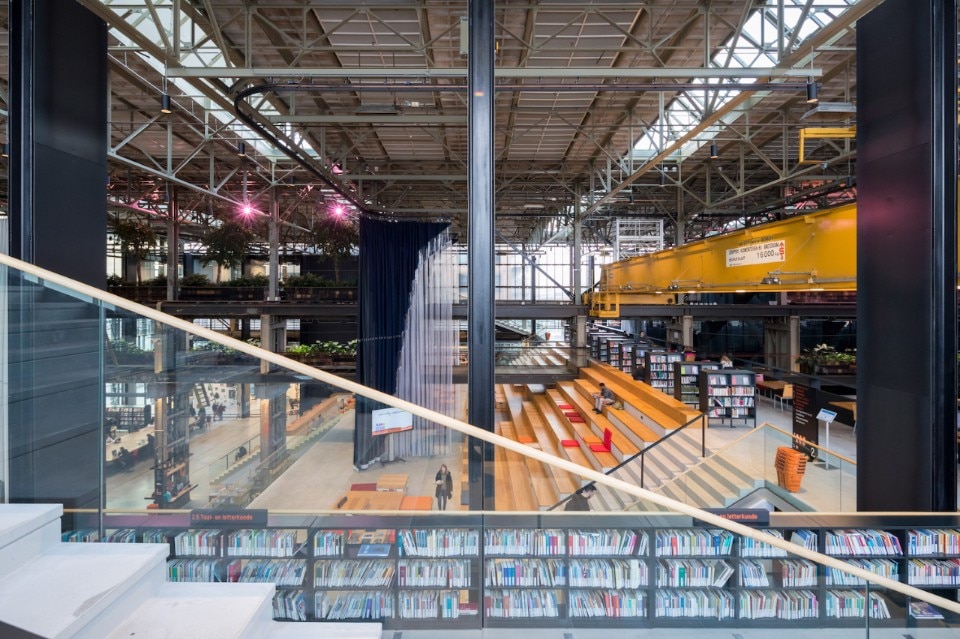
This distinctive sobriety has also recently been expressed in a number of building transformations, for which the industrial heritage became the ideal setting for cultural programmes such as De Pont Foundation (Benthem Crouwel, 1989-1992) and the Textile Museum (Cepezed, 1999-2008).
Recently, LocHal has been added to the list. The original structure was built in 1932 and used as a bustling large factory hall where carriages and locomotives were produced and repaired until its decommissioning in 2009 following the introduction of an electrically powered network. Since then, the hall had been left unchanged but without purpose. Unlike many other industrial buildings in the Netherlands that are stripped of history, this hall remained untouched so that the Municipality of Tilburg was able to take the initiative in 2014 to transform it into an urban space, celebrating the city’s collective memory of a workplace known to many of its citizens.
The outside is drawn inside while the interior functions as if were an outdoor plaza.
Eindhoven, adjoining the Tilburg station, and other renovated industrial buildings such as the Cupola Hall, the Hall of Fame, the Cultural Factory, a theatre and an educational centre. It consists of a double nave – two long parallel spaces of massive proportions that together form a large adaptable and highly functional space so that the locomotives could be moved onto transport bridges and driven from one hall to the next.
This existing context creates an opportunity for all the necessary additional structural and technical introductions for its new community purpose to remain subservient to the robust original structure. What has been introduced in this new phase can easily be undone and will not hinder reinterpretation of the original building by future generations.
Various elements of the LocHal project are exemplary, starting with the broad-mindedness of the municipality that requested the building to serve as a single large sheltered urban square, an interior space that could carry the spirit of the city as a whole. In this decision, there is also an awareness of where the economic future of the city might be sourced. While once the locomotives were the main raison d’être contributing to the region’s mobility and transformation, the city of Tilburg is promoting a new path for the development of knowledge.
Architecturally, each intervention and addition – regardless of scale – sits independently alongside the existing structure. From this perspective, the building project appears almost trivial as the landscaped interior surpasses the required formal expression: it is less about how something is resolved, and more about its destined performance. The city’s request for openness, allowing the long view through the structure, stems from a present absence of ostentatious detail, though all details are well resolved. This makes the whole composition radiate a selfevidence, as if it has always been, as if the original designers had the same vision back in 1932. Imperfection allows for many possibilities, and the structural manipulation gives strength to its authenticity. The existing riveted steel frame and the new material inserts – more absent than present – are forged into a new story while its urban character operates on all scales.
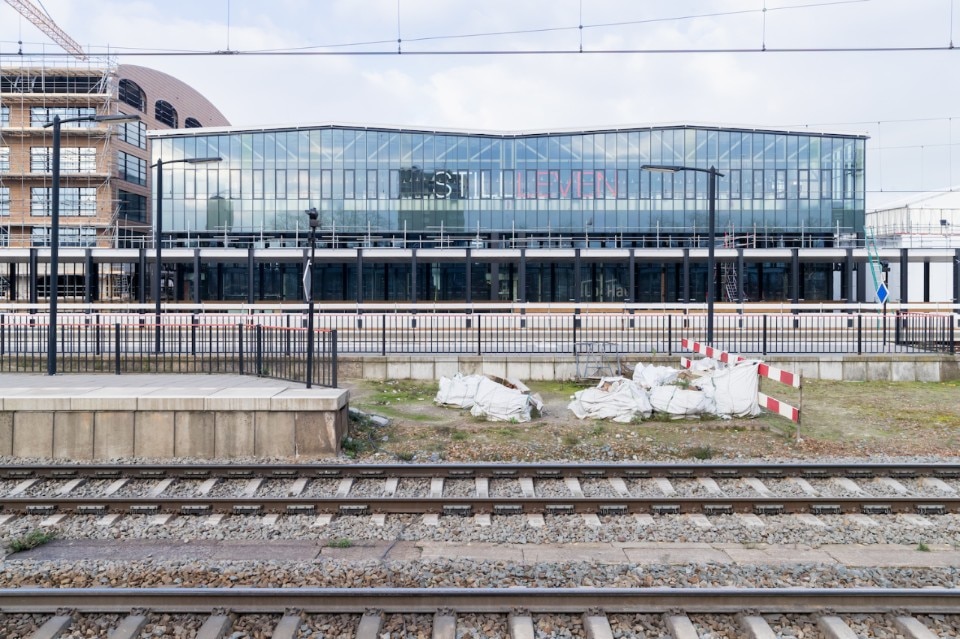
In this hall a number of interventions support the learning and knowledge sharing it has set out to foster. Initially, it is about a dimensional distribution from large to small rooms with a total of 300 workplaces, ranging from the collective amphitheatre to individual cells. A Seats2meet office, an art desk with exhibition space, restaurant, reading areas, an events hall, the Midden-Brabant Library and the KennisMakerij (“Knowledge Making Lab”) are also part of the programme that fills the building over a surface of about 11,200 square metres.
While the architectural firm Braaksma & Roos was responsible for the restoration of the existing structure, Civic Architects was in charge of assembling all the partial fragments into an architectural whole. The major new internal components were developed by Mecanoo in collaboration with Inside Outside – Petra Blaisse. The library, far removed from all classical solutions, is organised as an open, transparent and carefree space, without the feeling of security or control. It is spread over several floors while reading tables, common study areas and singular spaces are intertwined and woven through the whole. The ingenious interior landscape by Petra Blaisse became the reflection of a city in which squares and streets, alleys and homes, literally closed and figuratively open, are secluded on different levels.
LocHal is the result of a collaboration between design offices and developers seeking a methodology for how a building can make a city.
This organisational matrix provides structural subdivision, but also requires other devices to act as spatial partitions. Some spaces remain enclosed by walls such as office rooms, while other areas for events or temporary activities can be appropriated by means of six large movable textile panels. These textile “walls”, made in collaboration with the Tilburg Textile Museum, are not just curtains. Their materiality shifts from opaque to transparent, seemingly contradictory but reflecting the need to feel comfortable in an enclosed area: one can hear sounds and activity around, without feeling intrusion or isolation. The incorporation of these movable walls also introduces a softness within the hard structure. It is remarkable how this highly urban environment oozes calm and quiet, inviting respect without imposing restrictions.
The dialogue of inside versus outside, as well as the thresholds between components, is an interesting theme throughout the building: the outside is drawn inside while the interior functions as if it were an outdoor plaza. This intention to blur boundaries is carried beyond the introduction of movable walls or textiles. Required technical components are hidden in the deepened columns that remain unobtrusive but form part of a new rhythm, again seeming as if they have always been part of the space.
There is a deliberate interplay, perhaps even a tension, between old and new, between present and absent, between inside and outside, between being solitary or part of a larger gathering, and yet the quietness of it all contributes to focused study. Plants and trees have been introduced by the Donker Groen landscape agency, who initially proposed incorporating green areas into the existing transport bridges (an idea that could not be carried out as the weight would have exceeded their tolerance). In the end, they opted to fill the middle structure of both halls to create a green wall, albeit not a barrier.
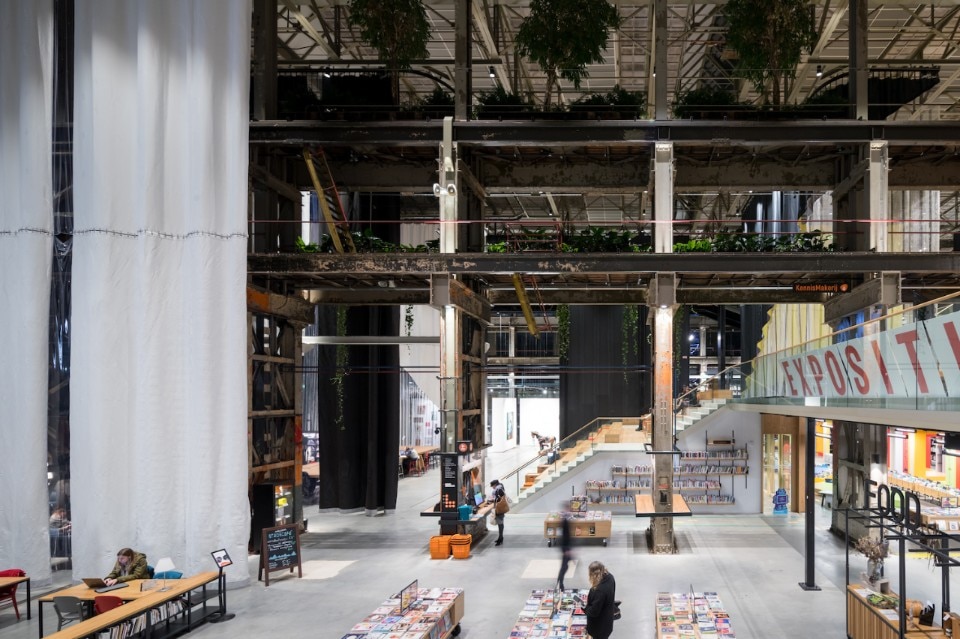
There is a strong dialogue between the separate contributions of all the different teams involved, following an inherent logic. It is striking that all their autonomous expertise is strongest where one meets the other. The spatial result is a story of strengthening knowledge into a single entity, where almost no difference can be traced between the individual interventions or contributions. Substance over brinkmanship, following the tradition of the Low Countries.
This is a game of good design offices and clever developers entering into a collaboration of mutual respect, seeking out a methodology for how a building can make a city. In this sense, the project is a completely orchestrated improvisation comparable to jazz fusion: all musicians present their improvisations, creating a new type of harmony, though each individual contribution remains completely intact. Just as with Miles Davis who played both melody and counter melody, so structure and counter structure, landscape and counter landscape pay tribute to the existing and vice versa. And now the citizens of Tilburg have appropriated the building as their own, like a living room of the city, fulfilling the original brief from the city council. Nothing less, nothing more.
Christian Kieckens is an architect, lecturer and architecture critic. With his eponymous studio based in Brussels, he works on projects of various scales, from objects to urban interventions. He has taught in Belgium, the Netherlands, the United Kingdom and France.


